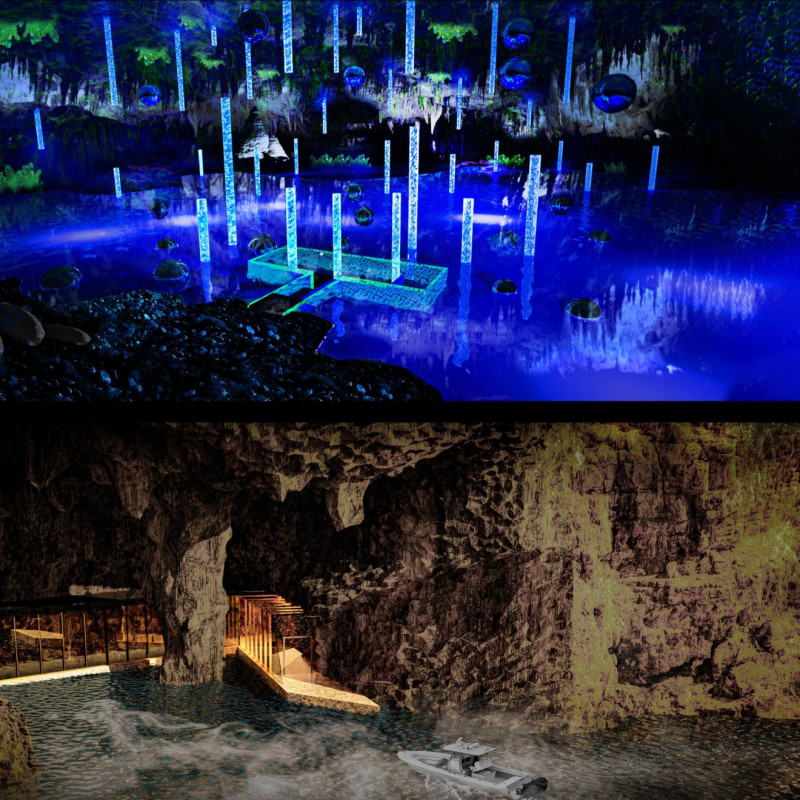5 key facts about this project
This project represents the evolving understanding of architecture as an extension of the landscape, rather than as a mere structure imposed upon it. The integration of natural elements into the building's form serves as an essential aspect of the overall design philosophy. It showcases how architecture can foster a connection between users and the environment, encouraging engagement with the site’s intrinsic qualities, such as its geological and ecological features.
The primary components of the project are intricately connected, forming a cohesive space that invites exploration and interaction. Above-ground structures seamlessly blend with subterranean spaces, which are designed to promote curiosity and discovery. Spatial configurations are diversified, accommodating various uses while encouraging fluid movement throughout the site. The building features a combination of open areas and more intimate zones, allowing users to experience the architecture from different perspectives.
The selection of materials is a key aspect of the project's design approach. Natural stone may serve as the primary material, reflecting the geological context and providing a sturdy foundation. Glass elements are likely incorporated to allow natural light to filter into the interiors, creating a bright and welcoming atmosphere while bridging the divide between inside and outside spaces. Timber could be utilized for pathways or decking, introducing warmth and an organic feel to various areas of the structure. Metal components might enhance the structural integrity and offer a contemporary touch, ensuring that the project resonates with modern design sensibilities.
One of the distinguishing features of this project is its responsiveness to the local climate and environment. The design strategically incorporates passive heating and cooling techniques, which not only reduce energy consumption but also foster indoor comfort. Additionally, the project may include water elements that contribute to the acoustic landscape, creating a soothing atmosphere that enhances user experience.
The project's unique approach to lighting is noteworthy, with consideration given to daylighting and artificial illumination. This aspect is carefully crafted to highlight architectural features while ensuring functionality. As users navigate the various spaces, changing light conditions create dynamic interactions between built forms and their natural surroundings, enhancing the overall sensory experience.
In its entirety, the project exemplifies a modern architectural ethos that prioritizes environmental awareness and user engagement. By prioritizing interaction between architecture and the landscape, this design enriches the user's experience, prompting a deeper understanding of the setting's natural beauty.
For those interested in exploring the nuances of the project's design, reviewing the architectural plans, architectural sections, and various architectural designs can provide deeper insights into the thoughtful decisions that underpin its creation. The blend of innovative architectural ideas and natural elements fosters a unique environment that reflects a contemporary approach to sustainable architecture, inviting further appreciation and exploration.























